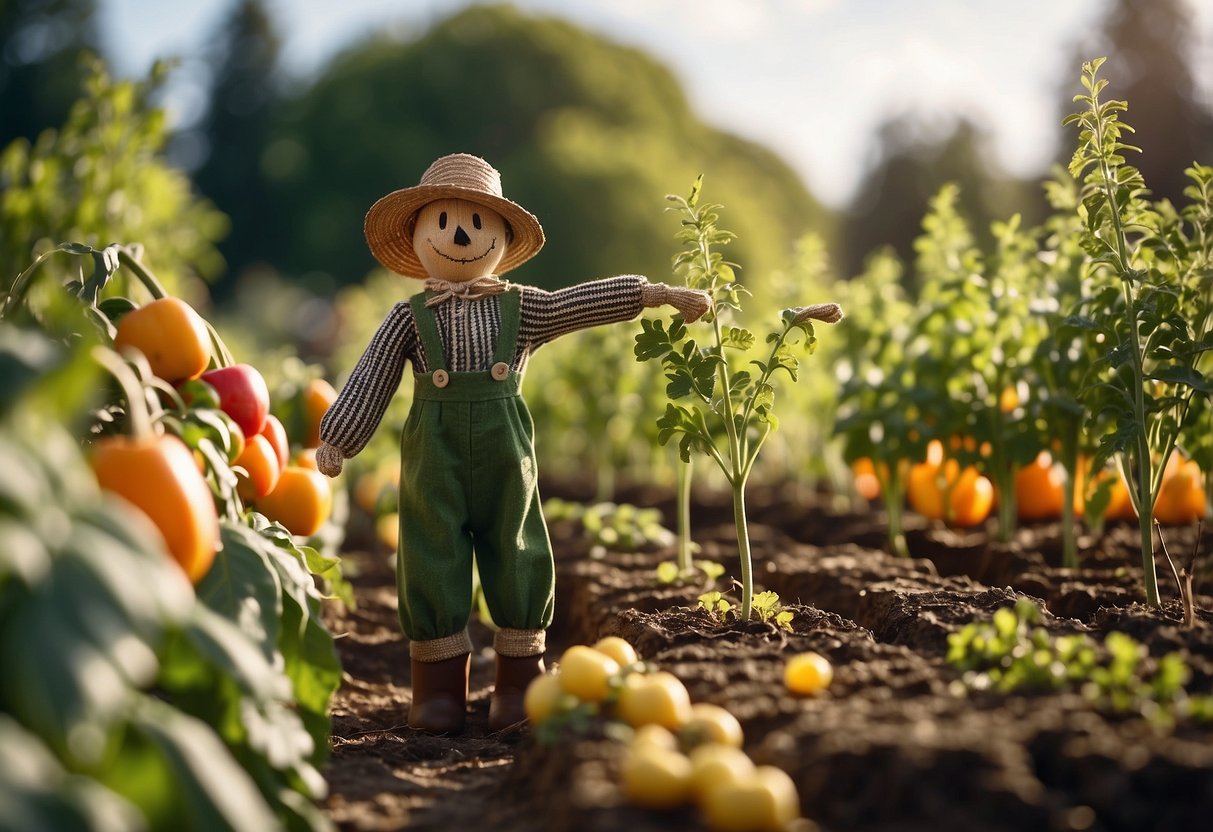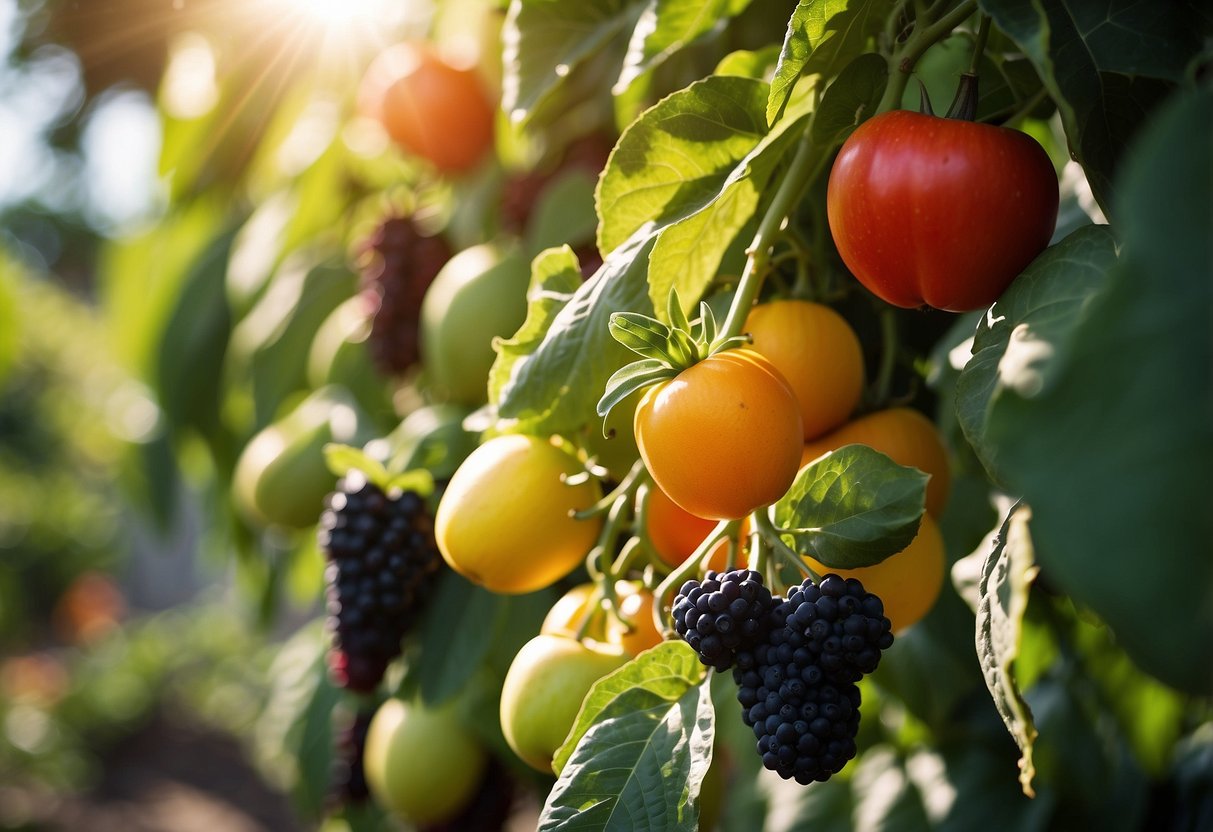Agriculture Garden Ideas: Simple Tips for a Bountiful Yard
Are you dreaming of starting your own agriculture garden but unsure where to begin? You’re in the right place. Whether you have a small backyard or a larger plot of land, there are countless ways to create a thriving garden that suits your needs.

What types of crops grow well together, and how can you maximize your space most efficiently? From raised beds to market gardens, we’ll explore a variety of ideas to help you get started and succeed in your gardening journey. Dive in and discover practical tips and creative options for turning your outdoor space into a productive haven.
1) Vertical Herb Garden

Vertical herb gardens are a fantastic way to grow your favorite herbs, especially if you have limited space. You can create a beautiful display by using hanging shelves with terra-cotta pots. Each pot can hold a different herb, making it easy to access fresh ingredients for your cooking.
Another idea is to use a rustic three-tiered herb garden made from pallet wood. This charming setup can fit even in small outdoor spaces. You can also try turning an Ikea bar cart into a mobile herb garden. This way, you can move your herbs around to get the best sunlight.
A wooden slat wall with planters is another option. This setup allows you to attach planters to a wall or fence, creating a green, lush look that can enhance any space.
2) Hydroponic Vegetable Kit

Using a hydroponic vegetable kit, you can grow fresh vegetables right in your own home. These kits often include everything you need to get started, including nutrient solutions and growing media.
Kits like the Vertefarm Hydroponic Home Garden are easy to use and take up very little space. Imagine growing your own lettuce, spinach, or tomatoes without needing a backyard!
3) Composting Bin

Creating a composting bin is a fantastic way to turn kitchen scraps and yard waste into nutrient-rich soil for your garden.
You can build a simple and effective compost bin using just a few materials. For example, a DIY single compost bin can be made with wood.
Another option is to use straw bales to create a compost holder. This is entirely organic and easy to set up.
4) Rainwater Harvesting System

Rainwater harvesting is a great way to make the most of natural resources. You can easily set up a system to collect rainwater from your roof.
Use a rain barrel under a downspout to catch water. A simple barrel can hold quite a bit and is perfect for watering your garden.
For larger needs, consider installing a rain garden. This acts as an overflow area where water can be stored and slowly absorbed into the ground. Check out more ideas for rainwater harvesting systems.
5) Raised Garden Beds

Raised garden beds are a great way to grow veggies, herbs, and flowers. They offer better soil drainage, making it easier for your plants to thrive. Plus, they provide easy access for planting and harvesting.
You can get creative with the materials. From simple wood frames to elaborate stone beds, the choices are endless. They can be more durable and suit the style of your garden.
Using raised beds also lets you customize the soil. This is perfect for different types of plants and growing conditions. They’re great for maximizing space in small gardens too.
6) Pollinator Friendly Plants

Adding pollinator-friendly plants to your garden helps support bees, butterflies, and birds. These plants can enhance your garden’s beauty and promote biodiversity.
Consider planting Blue Vervain, which attracts various pollinators with its tiny purple flowers. Another great option is lavender, known for its fragrant blooms that bees and butterflies love.
Native wildflowers such as coneflowers and black-eyed Susans are also excellent choices. They provide nectar and habitat for local pollinators.
Including a variety of plants ensures that something is always blooming, keeping your garden vibrant and busy throughout the growing season.
7) DIY Greenhouse

Building your own greenhouse can help extend your growing season. You can create a simple structure using materials that fit your budget.
For instance, you can build an A-frame greenhouse, which is both basic and effective.
Another option is a cedar wood frame with a polycarbonate cover. This is a bit larger and great for more growing space.
You might also like smaller, budget-friendly options like hoop houses. These can be made with PVC pipes and plastic sheeting.
8) Edible Flower Garden

An edible flower garden brightens up your yard and adds unique flavors to your meals. You can grow flowers like violas, marigolds, and bee balm. These blooms are not just beautiful; they are safe and tasty.
Viola flowers look great in salads and can even decorate ice cubes for special drinks. Bee balm gives an Earl Grey-like taste and can be used in teas or homemade butter.
For more ideas on edible flowers, check out this list of 20 Edible Flowers You Can Grow in Your Garden.
9) Fruit Tree Espalier

Fruit tree espalier is a neat way to make the most of your garden space. By training trees to grow flat against a wall or fence, you can create beautiful, living artwork.
You can espalier a variety of trees. In warmer climates, citrus trees, figs, and pomegranates work especially well.
Start by planting your tree about 8 to 10 inches from the support structure. This gives roots room to grow while keeping the tree close enough for training.
10) Aquaponic Fish Tank

An aquaponic fish tank is a great way to combine fish farming with plant growth. This setup uses fish waste as natural fertilizer for plants. In return, plants clean the water for the fish.
Start with a small tank, around 10 gallons. Place it in a stable, well-supported location. Use a PVC pipe with end caps as a hydroponic plant bed.
This system is eco-friendly, using 90% less water than traditional farming. It’s a fun, affordable project that can educate your children about natural nutrient cycles. Plus, it’s a perfect first step into aquaponics.
Benefits of Agriculture Gardens

Agriculture gardens offer numerous advantages that positively impact both the environment and human health. These benefits can transform your community and personal well-being.
Environmental Advantages
Agriculture gardens help reduce the carbon footprint by cutting down on food miles—the distance food travels from farm to table. Growing food locally means less transportation, resulting in lower emissions of greenhouse gases.
Enhancing biodiversity is another perk. Gardens provide habitats for various plants, insects, and animals. This boosts the local ecosystem’s resilience and promotes a sustainable balance.
Urban gardens often utilize practices like composting and rainwater harvesting. These methods conserve resources and reduce waste. Composting keeps organic waste out of landfills, enriching the soil and reducing methane emissions.
Health Benefits
Gardening provides fresh, nutritious produce right at your doorstep. This increases access to healthy food options and encourages better eating habits.
It’s also a great physical activity. Digging, planting, weeding, and harvesting can improve your strength, stamina, and flexibility. It’s a fun way to stay active without hitting the gym.
Mental well-being is another significant advantage. Spending time in a garden can reduce stress, anxiety, and depression. The act of nurturing plants has a calming effect and promotes relaxation. This makes it a therapeutic activity for many people.
Getting involved in garden projects also fosters social connections. Working with others on a shared goal can enhance community ties and build a sense of belonging.
Sustainable Practices for Agriculture Gardens

Sustainable gardening is about using techniques that protect the environment. Focus on methods that create healthy soil and reduce water waste.
Composting Tips
Composting is an excellent way to recycle organic waste and nourish your garden. To start, gather kitchen scraps like fruit peels, vegetable ends, and coffee grounds. Mix these with yard waste such as leaves, grass clippings, and small branches. Create a compost pile in a corner of your garden or use a compost bin.
You should turn your compost pile every few weeks to speed up decomposition and prevent odors. Keep the compost moist, but not too wet. When the compost is dark and crumbly, it’s ready to enrich your garden soil. Composting not only reduces waste but also improves soil structure and fertility.
Water Conservation Techniques
Reducing water use in your garden is essential for sustainability. One technique is to collect rainwater in barrels to water your plants. Setting up a drip irrigation system can also save water by delivering it directly to the plant roots, minimizing evaporation and runoff.
Mulching helps retain soil moisture. Spread mulch like shredded bark, grass clippings, or leaves around your plants. This keeps the soil cool and reduces the need for frequent watering.
Planting native species is another effective method. Native plants are adapted to your local climate, requiring less water and maintenance. By combining these techniques, you can create a water-efficient garden that thrives in any weather.







